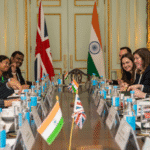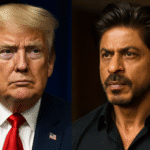The mask has slipped—once again, Pakistan has revealed its true, rotten face to the world. In a brutal act of provocation and sheer inhumanity, the Pakistan Army pounded civilian areas across the Line of Control (LoC) and International Border (IB) in Jammu and Kashmir with heavy artillery, mortars, and indiscriminate firing, killing at least 12 innocent civilians, including four children, and injuring 57 others. This was not an accident. This was not collateral damage. This was a deliberate, barbaric assault by a rogue military establishment that shelters, sponsors, and breeds terrorism as state policy.
The carnage, which unfolded during the night of May 6–7, 2025, followed India’s Operation Sindoor, a targeted and precise missile strike operation against nine terror hubs operating from deep within Pakistan and Pakistan-occupied Kashmir. In typical cowardly fashion, Pakistan responded not by confronting the Indian military but by raining death on unarmed civilians.
According to official reports, the worst-hit area was Poonch district, where all 12 civilian deaths were recorded. Among the victims were young children like Mohd Zain Khan (10), his sister Zoya Khan (12), and Maryam Khatoon (7). These children were not armed. They were not on the battlefield. They were playing, sleeping, and living—until Pakistan’s artillery shells tore through their homes.
The terror didn’t stop there. Reports confirmed that Balakote, Mendhar, Mankote, Krishna Ghati, Gulpur, and Kerni sectors came under heavy fire, with dozens of houses destroyed, vehicles at Poonch bus stand damaged, and families forced to take shelter in underground bunkers, while screams of injured women and children filled the smoky air. Evacuation efforts were severely hampered, as the relentless bombardment made movement near impossible.
In Uri sector of Baramulla, ten more civilians, including five minors, suffered injuries in the cross-border onslaught. Three others were wounded in Rajouri, while shelling in Karnah sector of Kupwara set several houses ablaze. Chaos reigned as residents fled their homes in the dead of night, running not from natural disaster, but from the orchestrated terrorism of Pakistan’s military machine.
The trigger? A necessary and righteous strike by the Indian Armed Forces against terror breeding grounds following the April 22 Pahalgam terror attack in south Kashmir, which claimed 26 Indian civilian lives. In a measured, non-escalatory response, India carried out precision missile strikes on Jaish-e-Mohammed camps, Lashkar-e-Taiba headquarters in Muridke, and other verified terror infrastructure. Not a single Pakistani military installation was targeted. That’s the difference between a responsible nation and a terror-exporting mafia state.
Despite this restraint, Pakistan’s response was unhinged and criminal. Shelling civilians is not retaliation—it’s state-sponsored terrorism.
A spokesperson for the Indian Army confirmed that the army is responding in a “proportionate manner”, and several Pakistani positions have been “destroyed with heavy enemy casualties.” However, this strategic military retaliation, while necessary, does not erase the suffering of the innocents caught in Pakistan’s bloodlust.
The Divisional Commissioner of Jammu, Ramesh Kumar, issued emergency orders to shut down all educational institutions in five border districts—Jammu, Samba, Kathua, Rajouri, and Poonch—a heartbreaking reminder that schoolchildren are now frontline targets thanks to Pakistan’s cowardice.
Let us be clear: this is not a ceasefire violation. This is mass murder. Pakistan signed the ceasefire agreement with India in February 2021, but has now violated it for 13 consecutive nights, aiming its weapons not at soldiers, but at school buses, villages, and markets.
Is this the behavior of a legitimate state? No. Pakistan has long lost the right to be treated as a responsible member of the international community. Its army acts as both the shield and sword of terrorism. While the rest of the world fights against terror, Pakistan funds it, protects it, and deploys it as a foreign policy tool. Its generals sip tea in air-conditioned bunkers while issuing orders that leave Indian villages soaked in blood.
India has acted with unparalleled restraint. Our missile strikes were focused, calculated, and surgical. We targeted terrorists—not civilians. But there is a limit to patience. India will not be a silent spectator while its citizens are slaughtered.
The global community must now take a stand. The United Nations, world powers, and human rights bodies cannot turn a blind eye to the cold-blooded murder of children and women by a uniformed terror regime. How long will the world allow Pakistan to hide behind the narrative of victimhood while it executes genocide through its army?
There must be consequences—diplomatic isolation, economic sanctions, and complete dismantling of terror infrastructure in Pakistan. Enough is enough.
This is not merely about India and Pakistan. It’s about right and wrong, humanity and inhumanity, life and death. Every shell fired from across the border carries the signature of Pakistan’s criminal intent. Every house burned, every child killed, every family torn apart is a testimony to the failed state that Pakistan has become.
In the face of this, India stands united and unbroken. Our forces are vigilant. Our resolve is strong. And our message is clear: those who harm innocent Indians—whether hiding behind masks or military uniforms—will pay the price.
Let this be the last time the world refers to these acts as “ceasefire violations.” Call them what they are: war crimes. And call Pakistan what it is: a terrorist state, armed and dangerous, led by generals with blood on their hands.







